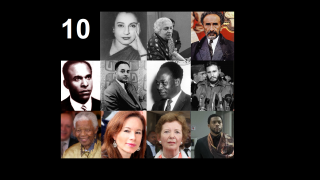
It has been nearly 50 years since the Convention on the Elimination of all forms of Racial Discrimination (CERD) entered into force on January 4th 1969. The convention is indeed one of the oldest human rights treaties in the United Nations system, which is perhaps quite surprising considering its purpose. But why and how did the convention come about in the 1960s and how successful has it been at eliminating racial discrimination?
Why did the convention come about in the 1960s?
The materialisation of the convention in the 1960s was not a coincidence but the result of changing power balances in the world. Despite its focus on racial discrimination the convention actually began as an effort to end both racial and religious discrimination - two issues that had become intertwined due to the legacy of the holocaust. Pressure for the convention in the mid-1960s was two-fold; first, the late 1950s and early 1960s experienced a new rise in incidents of anti-Semitism around the world, leading to calls on the General Assembly to produce a convention condemning religious and racial discrimination. Second, the political scene of the world was changing in the late 1950s and 1960s due to decolonisation. As a result, many newly independent Asian and African States were changing the power balances within the UN as they began to enter and influence the organisation.
Indeed, during the General Assembly debates over the need for a convention against religious and racial discrimination many of the new African member states (the Central African Republic, Chad and Guinea among others) began pushing for a solely racial convention. This push was aided by many Arab Countries, who preferred such a convention due to the ongoing Arab-Israeli crisis and by ideologically atheist Eastern European States. As a result, the Commission of Human Rights was tasked in November 1963 to create a declaration followed by a convention against purely racial discrimination.
What does the convention look like?
The resulting convention was deemed exceptional due to the implementation mechanisms it established, the strongest to be created for a UN Human Rights instrument at that time. These mechanisms include a “treaty body”: the committee on the elimination of all forms racial of discrimination (also referred to as CERD) that monitors and enforces the implementation of the convention. The committee does this through the submission of country reports by states on the status of racial discrimination at home and through an individual complaint mechanism that allows individuals to appeal to the committee should their rights be compromised. Furthermore, the convention was also exceptional due to its ambitious aim of totally eliminating racial discrimination, instead of, for example, aiming to solely ‘reduce’ it. Due to this the convention also includes articles on the condemnation of, for example, hate speech and Apartheid.
The convention was also one of the speediest to be adopted by the UN, which is further seen as testimony of the importance that the organisation and its member states placed on the issue. The General Assembly accepted the draft convention by mid-1964 and it entered into force a mere 5 years later in 1969, a speed unheard of at the UN at that time or since. All in all, the road to the convention seemed to reflect a strong will among the member states of the UN to bring racial discrimination to an end. But how successful has CERD been in achieving its goal in its 50 years of existence?
Fifty years on
Despite the relatively strong implementation system, the apparent importance of the issue and the near universal acceptance of the convention (it currently has 179 states party to it), the success of CERD can be questioned. This was apparent already in the immediate aftermath of its adoption. Many states in which racial discrimination was the most widespread, notably South Africa, did not sign the treaty until much later on or entered reservations to it that undermined its effectiveness. The sincerity of many states that did sign the treaty was also questionable as many states became reluctant to submit their reports to the CERD committee or to pay their share of its costs (as discussed by Michael Banton in his book International Action Against Racial Discrimination). An alarming example of this is Sierra Leone who has not submitted a report since 1974, despite ratifying the convention in 1967.
Furthermore, the difficulty of the task of eliminating racial discrimination was also apparent in the years following the convention's entry into force. Racism persisted world-wide. The following decades saw wars fought along racial lines in countries such as Rhodesia/Zimbabwe, the continuity of legalised racial discrimination in the form of the Apartheid in South Africa until the 1990s, and the fight for civil rights in the United States.
This is not to say that the Convention has completely failed as it has been significant in influencing domestic legislation. Due to CERD, many states have adopted laws on racial equality and on prohibiting racial discrimination, such as the UK’s Race Relations Act of 1976.
The fight for the total elimination of racial discrimination continues to this day, nearly 50 years after CERDs entry into force. As Rita Izsák-Ndiaye explains in another piece in this publication the modern-day challenge in eliminating racial discrimination is the lack of political will by states when it comes to fully respecting and committing to the convention.
Photo: Ambassador Michel Gallin-Douathe makes the Central African Republic one of the first nine states to sign the Convention on 7 . At left is Secretary-General U Thant, and in the background is C.A. Stavropoulos, Under-Secretary and Legal Counsel. Credit: UN Photo/Teddy Chen

















